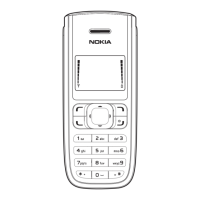Additional safety information
80
investigating the effects of radiofrequency energy (RF) exposures
characteristic of wireless phones have yielded conflicting results that often
cannot be repeated in other laboratories. A few animal studies, however, have
suggested that low levels of RF could accelerate the development of cancer in
laboratory animals. However, many of the studies that showed increased
tumor development used animals that had been genetically engineered or
treated with cancer-causing chemicals so as to be pre-disposed to develop
cancer in the absence of RF exposure. Other studies exposed the animals to
RF for up to 22 hours per day. These conditions are not similar to the
conditions under which people use wireless phones, so we don’t know with
certainty what the results of such studies mean for human health.
Three large epidemiology studies have been published since December 2000.
Between them, the studies investigated any possible association between the
use of wireless phones and primary brain cancer, glioma, meningioma, or
acoustic neuroma, tumors of the brain or salivary gland, leukemia, or other
cancers. None of the studies demonstrated the existence of any harmful
health effects from wireless phone RF exposures. However, none of the
studies can answer questions about long-term exposures, since the average
period of phone use in these studies was around three years.
5. What research is needed to decide whether RF exposure
from wireless phones poses a health risk?
A combination of laboratory studies and epidemiological studies of people
actually using wireless phones would provide some of the data that are
needed. Lifetime animal exposure studies could be completed in a few years.
However, very large numbers of animals would be needed to provide reliable
proof of a cancer promoting effect if one exists. Epidemiological studies can
provide data that is directly applicable to human populations, but 10 or more
years follow-up may be needed to provide answers about some health
effects, such as cancer. This is because the interval between the time of
exposure to a cancer-causing agent and the time tumors develop - if they do
- may be many, many years. The interpretation of epidemiological studies is
hampered by difficulties in measuring actual RF exposure during day-to-day
use of wireless phones. Many factors affect this measurement, such as the
angle at which the phone is held, or which model of phone is used.
N1315_UG_EN_Non-RUIM_Vivo_FCC_0804.fm Page 80 Friday, August 4, 2006 6:02 PM

